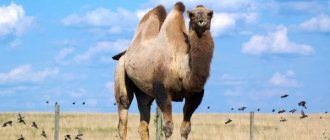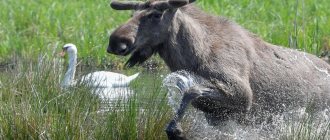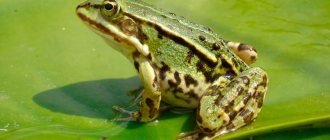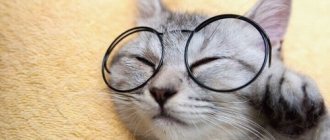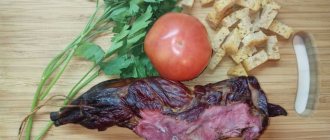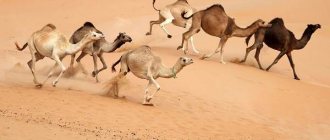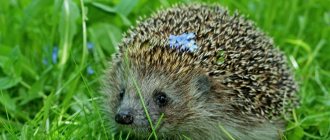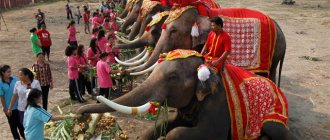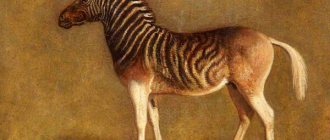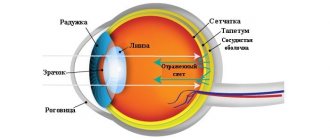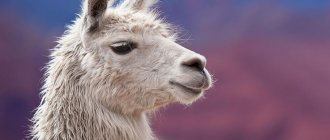Organism that eats mostly or exclusively animal tissue
This article is about the general concept of a meat-eating animal. For the order of mammals, see Carnivora. For other uses, see Carnivore (disambiguation).
Lions are obligate carnivores, consuming only animal meat to meet their nutritional needs.
Carnivorous
/kɑːrnɪvɔːr/, meaning "meat eater" (Latin,
sago
, genitive
carnis
, meaning "meat" or "flesh" and
vorare
meaning "to devour"), is an animal whose food and energy requirements come from exclusively from animal tissue or meat, whether during hunting or scavenging. [1] [2] Animals whose nutritional needs depend solely on animal meat are called obligate carnivores, while those that also consume non-animal foods are called facultative carnivores. [2] Omnivores also consume both animal and non-animal food, and other than a more general definition, there is no clearly defined ratio of plant to animal material that can distinguish a facultative carnivore from an omnivore. [3] A carnivore at the top of the food chain that is not hunted by other animals is called an apex predator.
"Carnivore" can also refer to the order of mammals Carnivora, but this is somewhat misleading: many, but not all, Carnivora are meat eaters, and even fewer are true obligate carnivores (see below). For example, while the Arctic polar bear eats meat almost exclusively (over 90% of its diet is meat), most species of bears are omnivores, and the giant panda is exclusively a herbivore. There are also many carnivorous species that are not members of Carnivora. The correct term for mammals of this group is "carnivoran". Additionally, some mammals, especially cetaceans, are highly carnivorous but are not true predators.
Outside the animal kingdom, there are several genera containing carnivorous plants (primarily insectivorous) and several phyla containing carnivorous fungi (preying primarily on microscopic invertebrates such as nematodes, amoebas, and springtails).
Members of the plant kingdom can also eat meat, such as the Venus flytrap, a carnivorous plant.
Sometimes predators are characterized by their type of prey. For example, animals that feed primarily on insects and similar invertebrates are called insectivores, while those that feed primarily on fish are called piscivores. The first tetrapods, or land vertebrates, were piscivorous amphibians known as labyrinthodonts. They gave rise to insectivorous vertebrates, and later to predators of other tetrapods. [4]
Alternatively, carnivores can be classified by the percentage of meat in their diet. A diet of hypercarnivore consists of more than 70% meat, that of mesocarnivore 30–70%, and of hypocarnivore less than 30%, with the remainder consisting of non-animal foods such as fruits, other plant materials, or mushrooms.
Obligate carnivores
The Bengal tiger's large fangs and strong jaws show its place as an apex predator
Lions are voracious predators; they require more than 7 kilograms of meat per day. The main component of their diet is the meat of large mammals such as buffalo.
Obligate or “true” carnivores are those whose diet requires nutrients found only in animal meat. Although obligate carnivores can ingest small amounts of plant matter, they lack the physiology necessary to fully digest it. Some obligate carnivorous mammals ingest vegetation as an emetic, to induce vomiting of stomach-upsetting food. [ citation needed
]
Obligate carnivores are diverse. The amphibious axolotl eats primarily worms and larvae in its environment, but will consume algae when necessary. All felids, including the domestic cat, require a diet consisting primarily of meat and animal organs. [5] In particular, cats have high protein requirements and their metabolism is unable to synthesize important nutrients such as retinol, arginine, taurine, and arachidonic acid; thus, in nature they must consume meat to supply these nutrients. [6] [7]
Camel
Members of the genus Camelus, camels are four-legged, artiodactyl mammals bearing distinctive fatty deposits on their backs known as humps. These animals are found in Asia and Africa. Camels were domesticated by humans because they are adapted to live in waterless and hot places, with significant differences in ambient temperature between day and night. Camels are herbivores; their main diet consists of saltwort, wormwood, camel thorn and saxaul.
Characteristics of predators
Characteristics commonly associated with carnivores include strength, speed, and keen senses for hunting, as well as teeth and claws for capturing and tearing prey. However, some carnivores do not hunt and are scavengers, lacking the physical characteristics to bring down prey; in addition, most predators will scavenge when given the opportunity. Carnivores have a relatively short digestive system, since they do not need to break down the durable cellulose contained in plants.
Many game animals have eyes facing forward, which allows them to sense depth. This is almost universal among mammalian predators, while most reptile and amphibian predators have sideways-facing eyes.
Horse
The horse (Equus ferus caballus) is an odd-toed ungulate mammal belonging to the equidae family. Human domestication of horses began around 4000 BC, and became widespread by 3000 BC. Horses are herbivores and typically eat grass. However, domesticated horses are often fed oats, bran, barley and hay.
Prehistoric carnivores
Main articles: Predation § Evolutionary history, and Evolutionary history of life
Predation
(the eating of one living thing by another for food) predates the emergence of recognized predators by hundreds of millions (possibly billions) of years. The earliest predators were microbial organisms that consumed or ate others. Due to the poor fossil record, these early predators could date back to 1 to 2.7 Gya (billion years ago). [8] The growth of eukaryotic cells at about 2.7 Gya, the growth of multicellular organisms at about 2 Gya, and the rise of mobile predators (about 600 million years ago - 2 Gya, probably about 1 Gya) are all attributed to early predatory behavior . ,[8] and many very early remains show borehole marks or other markings attributed to small predator species.[8]
Among the more famous species, the first vertebrate predators were fish, followed by amphibians, which came onto land. Early tetrapods were large fish-eating amphibians. Some scientists claim that Dimetrodon
"was the first land vertebrate to evolve curved, serrated teeth, which allow a predator to eat prey much larger than itself." [9] While amphibians continued to feed on fish and then insects, reptiles began to explore two new types of food: tetrapods (carnivores) and plants (herbivores). Carnivory was a natural transition from insectivory for medium and large tetrapods, requiring minimal adaptation; In contrast, feeding on highly fibrous plant material required a complex set of adaptations. [4]
In the Mesozoic, some theropod dinosaurs such as Tyrannosaurus rex,
They were probably obligate carnivores.
Although theropods were larger carnivores, several groups of carnivorous mammals were already present. Most notable are the gobiconodontids, triconodontids Jugulator
, deltatheroidans and
Cimolestes
.
Many of them, such as Repenomamus
,
Jugulator
and
Cimolestes
, were among the largest mammals in their faunal communities, capable of attacking dinosaurs. [10] [11] [12]
In the early to mid-Cenozoic, the dominant forms of predators were mammals: hyaenodonts, oxyaenids, entelodonts, ptolemaiidans, arctocyonids and mesonychians, representing a large diversity of placental predators in the northern continents and Africa. In South America, sparassodonts were dominant, while Australia saw the presence of several marsupial predators, such as dasyuromorphs and thylacoleonids. From the Miocene to the present, the predominant carnivorous mammals were carnivoramorphs.
Most carnivorous mammals, from dogs to Deltatheridium
, have several dental adaptations in common, such as carnassialiforme teeth, long canines, and even similar tooth replacement patterns.
[13] The most aberrant are the thylacoleonids, with a diprodontal dentition quite unlike that of any other mammal; and eutriconodonts like gobioconodontids and Jugulator
, with a tri-parabolic anatomy that nonetheless functioned much like carnassials. [10] [14]
Elephant
Elephants are members of the elephant family (Elephantidae) and are native to Asia and sub-Saharan Africa. They are the only surviving members of the order Proboscidea, as other close relatives such as mammoths, mastodons and gomphotheres became extinct. There are three known species of elephants: the African forest elephant, the African savanna elephant and the Indian elephant. They are all herbivores that consume small plants, bushes, fruits, twigs, tree bark and roots.
Recommendations
- Nutrient Requirements: Carnivores. Duane E. Ullrey. Encyclopedia of Animal Science.
- ^ ab Mammals: carnivores. Duane E. Ullrey. Encyclopedia of Animal Science.
- Mammals "Omnivores. Duane E. Ullray. Encyclopedia of Animal Science.
- ^ ab Sahney, S., Benton, M. J. & Falcon-Lang, H. J. (2010). "Tropical forest collapse triggered diversification of Pennsylvanian tetrapods in Europe." Geology
.
38
(12):1079–1082. Bibcode: 2010Geo…. 38.1079S. DOI: 10.1130/G31182.1.CS1 maint: multiple names: authors list (link) - Velegrand-Defretin, Veronique (1994). "Differences between cats and dogs: a nutritional perspective". Proceedings of the Nutrition Society
.
53
(1): 15–24. DOI: 10.1079/pns19940004. PMID 8029223. - Ullrey, D. E. (2004). "Mammals: Carnivores". In the Pond, Wilson (ed.). Encyclopedia of Animal Science
. CRC Press. item 591. ISBN. 978-0-8247-5496-9. - Ullrey, D. E. (2004). "Nutrient Requirements: Carnivores". In the Pond, Wilson (ed.). Encyclopedia of Animal Science
. CRC Press. item 670. ISBN 978-0-8247-5496-9. - ^ abc Origin and early evolution of predation, 2002 (full text)
- ↑
Foley, James A. (February 7, 2014). "A pre-dinosaur carnivore was the first to evolve steak knife-like teeth". Natural World News. Retrieved May 3, 2014. - ^ ab Zofia Kielan-Jaworowska, Richard L. Cifelli, Zhe-Xi Luo (2004). "Chapter 12: Metatherians." Mammals of the era of dinosaurs: origin, evolution and structure. New York: Columbia University Press. pp. 425–262. ISBN 0-231-11918-6.
- Fox, Richard S. (2015). "Revisiting the Late Cretaceous–Paleocene eutherian mammal Cimolestes Marsh, 1889." Canadian Journal of Geosciences
.
52
(12):1137–1149. Bibcode: 2015CaJES..52.1137F. DOI: 10.1139/CENTER-2015-0113. - Cifelli, Richard L.; Madsen, Scott K. (1998). "Triconodonts from the Middle Cretaceous of Utah". Journal of Vertebrate Paleontology
.
18
(2):403–411. DOI: 10.1080/02724634.1998.10011068. - De Muison, Christian; Lange-Badre, Brigitte (1997). "Carnivorous dental adaptations in tribosphenic mammals and phylogenetic reconstruction". Flying
.
30
(4): 353–366. DOI: 10.1111/j.1502-3931.1997.tb00481.x. - Food encyclopedia. Animales Carnivoros.
Ejemplos, alimentacion y curiosidades. Archived February 24, 2022, at the Wayback Machine . (in Spanish) 02/02/2017.
Giraffe
Giraffes are artiodactyl mammals from the genus (Giraffa). They are the tallest living land animals on the planet. The genus Giraffa has 6 species. Giraffes eat exclusively plant foods. Their long necks allow them to reach the branches, buds and leaves of acacia trees. Giraffes can eat large amounts of greens and go for weeks without drinking water because they get most of their moisture from the vegetation they consume.
Big panda
The giant panda (Ailuropoda melanoleuca) is a mammal from the bear family (Ursidae) native to China. A panda is easily recognized by its large, distinctive black spots around its eyes, on its ears, and across its round body. Although this animal belongs to the order Carnivora, its diet consists of more than 99% bamboo. Giant pandas in the wild may sometimes eat other grasses, wild tubers, or even the meat of birds, rodents, or carrion.
Hippopotamus
The hippopotamus or common hippopotamus (Hippopotamus amphibius) is an African artiodactyl mammal. Often considered the second largest land animal. The hippopotamus is comparable in size and weight to the white rhinoceros (Ceratotherium simum) and the Indian rhinoceros (Rhinoceros unicornis). Like other herbivores, hippos eat a variety of plants, but the majority of their diet consists of grass.
Examples of mammal species
Adapted to the earth
cheetahs
The cheetah is the fastest land animal. Your heart is large, which allows you to pump more blood to your body. The lungs and nasal passages are wide, capable of absorbing more oxygen. The tail is long, giving stability when pursuing prey. Its claws do not extend, improving traction.
jackal
They are carnivorous animals, although they can also be scavengers. Its long legs with large plants will make it easier for you to run long distances to reach your prey.
cougar
Its head is round, with pointed ears. Its jaw has powerful muscles that, together with its fangs, allow it to catch, kill and tear large prey.
Its front legs are strong and its hind legs are slightly taller, making it easy to jump at high altitudes and have speed over short distances.
Polar bear
Ears and tails, along with a thick layer of fat, reduce the maintenance of body heat.
The fur is translucent and consists of many hollow hairs that are filled with air and serve as thermal insulation. Its skin is black, which will attract the best solar radiation.
Adapted to water and land
Elephant seal (Mirounga)
These animals live primarily in the open sea, moving closer to land to breed and nurse. This forces them to stay on land for long periods of time, staying dry for weeks.
It has large round eyes, which is beneficial when hunting its prey. His body is like a torpedo, which helps to displace him with water. Elephant seals' bodies store large amounts of blood, thus conserving enough oxygen to use when submerged in the sea.
There is an aspect that characterizes them, sexual dimorphism. Males reach more than 6 meters and have an elongated snout, similar to the body. Females do not measure 3 meters.
Social behavior
Some predators are solitary, like bears, or they may be grouped in packs. Sociability in this group will depend not only on the characteristics of the species, but variations may be influenced by habitat geography, sex and age.
Red foxes breed in groups in certain geographic regions, while in others they engage in solitary social behavior. Female koichi live together, while males spend most of their time alone.
Group life brings with it the formation of hierarchies of dominion, with very strong bonds between its members. This social structure helps the herd stay together and reduces conflict and the possibility of aggressive behavior among its members.
This is interesting: How do wild animals prepare for the winter cold?
Types of power circuits
Animals are connected to each other in a food chain. They can eat plants or other animals. A food chain is a sequence in which some living things become food for others. They are divided into two types: pasture and detrital.
Pasture chain
The food chain diagram begins with plants. This is the first link. The second link is herbivorous animals. The chain then includes predators. For example, a hare can eat carrots. And later he will become food for the wolf.
Longer animal food chains are found in the natural world. Similar examples can be observed among the inhabitants of rivers, seas or oceans. Algae are the first link. They are eaten by small fish. Then the fish of the second link are eaten by larger individuals. Marine representatives of the third link can be eaten by large fish - the fourth link. The latter end up in human food.
Detrital chain
The chain begins with a large animal that dies. His body begins to decompose. Now it serves as food for smaller scavenger animals, which also die in due time and become food for other individuals. Small representatives include worms, insects and microorganisms. The latter release a substance called detritus. These feeding habits of animals gave rise to the name of the chain.
Detritus includes:
- wood from dead trees;
- fallen leaves;
- excrement;
- animal corpses.
The pasture and detritus chains are connected by scavengers. They eat the soft tissue of the dead animal, leaving the bones to rot. After their death, scavengers also become a breeding ground for other organisms.
Food networks
One representative of a food chain often simultaneously becomes a participant in several such chains. It can occupy different positions. As a result, food webs are formed. The opportunity for organisms to obtain food expands and the stability of the ecosystem is ensured.
